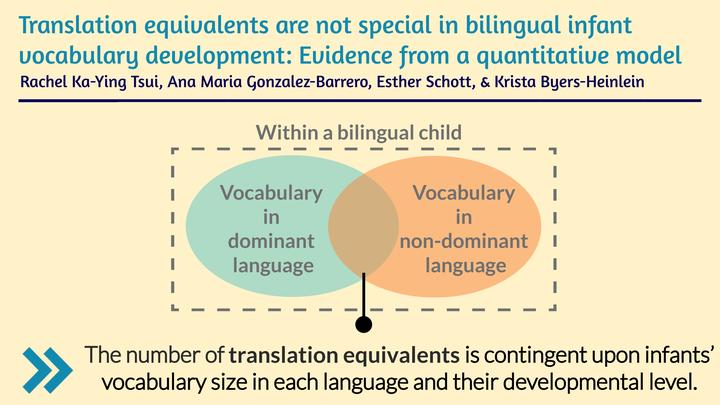Translation equivalents aren't special in bilingual vocabulary development: A quantitative model

Abstract
Contrasting theories have proposed to explain translation equivalent learning in bilingual infants: that they are avoided, enhanced, or independent of learning the corresponding word in the other language. We developed a novel quantitative model that conceptualizes translation equivalents as the joint probability of learning the word in each of the infant’s two languages. The number of translation equivalents an infant produces at a given age was therefore modeled as a function of infants’ vocabulary size in each language and the number of potentially learnable words at the infant’s age. Our model provided an excellent fit to vocabulary data collected from 201 French–English bilingual 18- to 33-month-olds. Parameter estimates suggested that translation equivalent learning is neither avoided nor enhanced, but instead that translation equivalents are learned independently from one another. Translation equivalents are not special in bilingual infant vocabulary acquisition, but are expected outcomes of independently learning words in two languages.